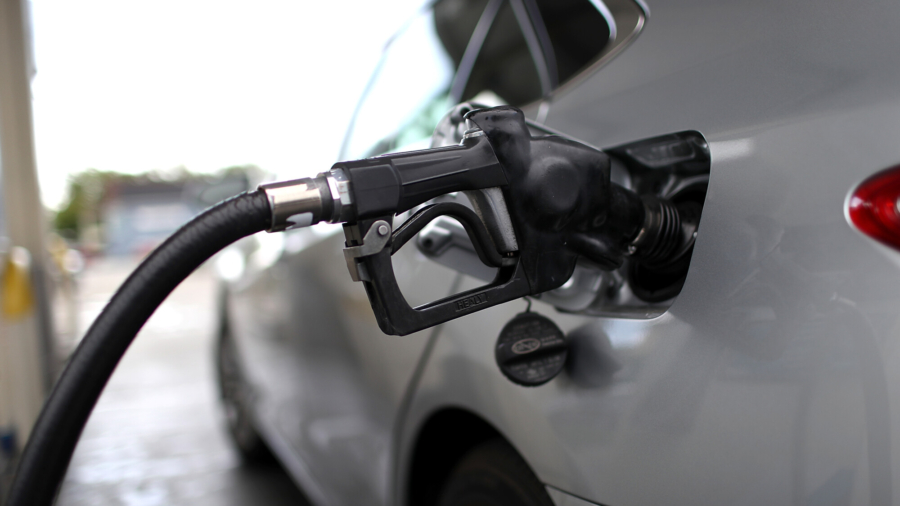Gas prices are the highest they have been in seven years, and they are going to keep on climbing through winter.
Across the entire United States, the current average price for a gallon of gas is $3.37. The last time it averaged $3.37 a gallon was Sept. 17, 2014, according to records kept by AAA.
The lowest average for gas since that time was $1.76 a gallon on April 29, 2020.
“That was in the depths of the pandemic when everyone was staying home. Demand was low globally too, and since then it has crept up, a penny here and a penny there,” Andrew Gross AAA spokesman told The Epoch Times in a phone interview.
It goes to show how much demand affects prices. Other factors include the federal gas tax, 18.4 cents per gallon; and state gas tax, which is highest in Pennsylvania at 58 cents per gallon and lowest in Alaska at 8 cents per gallon.
The cost of crude oil drives 50 percent to 60 percent of the cost per gallon.
“As the price of crude oil goes up, it will at pump as well,” Gross said. “Crude oil has gone up 24 days in a row.”
While the average price per gallon Friday was $3.37 nationwide, the prices vary widely. Gas is $2.96 a gallon in Brooks County Texas, very close to the refineries. But that is a lot compared to a year ago when the average cost per gallon in Texas was $1.86.
The highest in the country is in Mono County California where drivers are paying $5.30 a gallon. Mono County is very far from refineries, Gross said. A year ago, California’s average was $3.19 per gallon.
Based on a vehicle with a 16-gallon tank, last year in California it cost $51.04 to fill that tank. Now it costs $84.80. That is $33.76 per tank more this year.
“Oil is a global commodity. It is bought, sold, and traded on a global basis,” Gross said. “During the depths of COVID, production was slashed everywhere, and we have not recovered from that. When the price dropped into negative barrel territory, there wasn’t an incentive to produce oil.” Some folks capped their wells, he said.
“It’s a temporary lag, but a painful lag. It’s going to take a while for production to catch up with demand,” Gross said. “With the U.S. economy recovering compared to a year ago, oil production is still below pre-pandemic levels.” And with a cold winter expected, more oil will go to heat homes, keeping demand high.
Demand is higher now, but production has not caught up.
The cost for a barrel of oil was $63 in August and now it is $83 a barrel. That is driving cost up, but also getting producers more interested in producing.
“I don’t really see relieve at the pump any time soon,” Gross said. “There is no shortage of oil or gasoline in the country. Consumers are just paying more at the pump, unfortunately.”
From The Epoch Times


